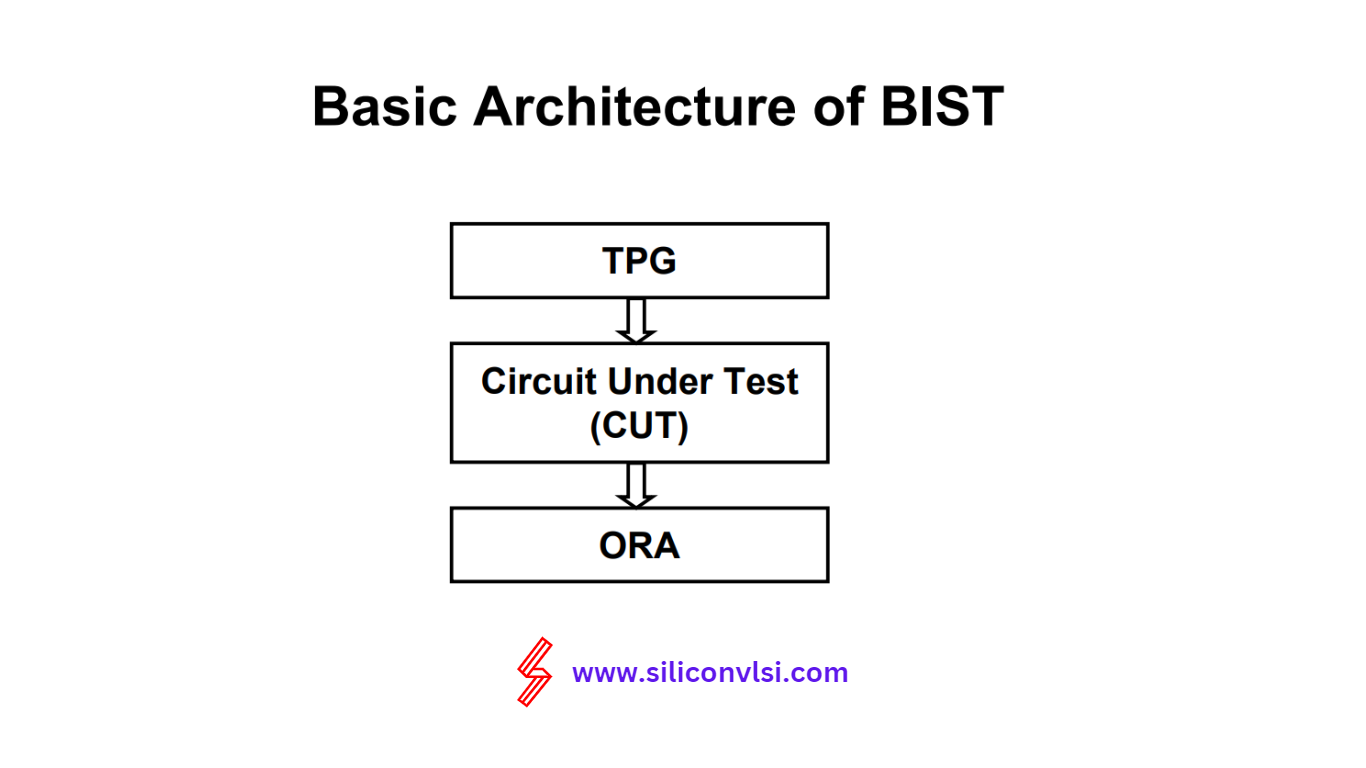
Built-in self-test, or BIST, is a DFT methodology involving the insertion of additional hardware and software features into integrated circuits to allow them to perform self-testing, thereby reducing dependence on an external ATE
When we work with CMOS circuits—found in devices like microprocessors, memory units, and sensors—we encounter unique testing challenges due to their complexity, fault sensitivity, and the large number of transistors involved. To make the testing process more efficient and cost-effective, many CMOS circuits are designed with built-in self-test (BIST) techniques. Here, you’ll get a clear look at BIST fundamentals, understand its benefits and challenges, explore various BIST types, and see some real-world examples of its application.
Built-In Self-Test (BIST) Basics BIST involves integrating test logic directly within the circuit itself. This test logic can take the form of hardware or software, depending on the circuit’s design and implementation. The test logic performs a range of functions, including generating test patterns, applying them to circuit inputs, measuring outputs, comparing them to expected values, and reporting the test results. BIST can be implemented at various levels of abstraction, such as logic, functional, or structural.
Advantages of Built-In Self-Test (BIST) BIST offers several advantages over traditional external testing methods that rely on specialized equipment or test vectors. By enabling circuits to test themselves without external intervention, BIST reduces the need for expensive and complex test equipment and interfaces. This simplifies the testing process while increasing test coverage, as circuits can generate and apply tailored test patterns. Furthermore, BIST facilitates faster and more reliable testing by performing self-checks and self-repairs during operation or at predefined intervals. It enhances circuit quality and reliability by detecting and correcting faults and defects before they impact functionality or performance.
When incorporating BIST techniques into CMOS circuit design, it’s essential to address the associated challenges and limitations. BIST increases circuit complexity and overhead, potentially affecting the area, power, speed, and cost. Balancing the test logic with the functional logic of the circuit requires careful partitioning or isolation of components to avoid conflicts. Moreover, BIST may not be capable of detecting certain types of faults or defects, such as intermittent, latent, or environment-dependent issues. Complementary testing methods or techniques may be necessary to ensure comprehensive and accurate test results.
Built-In Self-Test (BIST) Types
Different BIST techniques can be applied when testing CMOS circuits, depending on the nature and scope of the desired test. Let’s examine some common BIST types:
Logic BIST (LBIST): LBIST is employed to test logic gates and interconnections. It utilizes pseudo-random or deterministic test patterns for comprehensive testing.
Memory BIST (MBIST): MBIST focuses on testing memory elements and arrays using specialized algorithms and architectures. This technique ensures reliable memory functionality.
Analog BIST (ABIST): ABIST verifies analog components and signals by leveraging analog-to-digital converters, digital-to-analog converters, or oscillators. It ensures accurate analog circuit performance.
Functional BIST (FBIST): FBIST evaluates the functional behavior and performance of the circuit using application-specific or operational test patterns. This technique ensures overall circuit reliability.
Applications of Built-In Self-Test (BIST)
To illustrate the practical application of BIST techniques in CMOS circuits, let’s consider a few examples across different domains and devices:
Microprocessors: BIST can be utilized to test important components within microprocessors, such as the arithmetic logic unit (ALU), cache memory, instruction decoder, or bus interface. This ensures the reliable performance of these complex processors.
Memory Devices: In memory devices like RAM, ROM, flash memory, or memory controllers, BIST can be used to evaluate the integrity and functionality of these vital storage elements.
Sensors: BIST plays a vital role in assessing the performance of sensors. It can be employed to test the sensor element, signal conditioning circuitry, analog-to-digital converter, or communication interface, ensuring accurate and reliable sensor readings.
Wireless Devices: BIST is essential for wireless devices, including radio frequency (RF) transceivers, modulation and demodulation circuits, error correction circuits, and encryption circuits. By applying BIST techniques, these devices can achieve optimal performance and secure communication.
Conclusion
Built-in self-test (BIST) techniques provide an effective means of testing CMOS circuits, offering numerous advantages such as reduced costs, increased test coverage, faster testing, and enhanced reliability. While challenges exist, proper implementation and consideration of BIST types can overcome these obstacles. By harnessing the potential of BIST, designers, and manufacturers can ensure the robustness and functionality of CMOS circuits across various applications and domains.